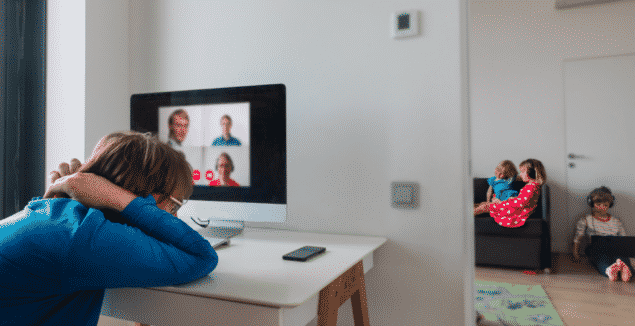The use of teleconferencing applications has skyrocketed in recent months. Virtual communication platforms such as Zoom and Microsoft Teams have been a mainstay because of the COVID-19 pandemic. But even as the coronavirus slowly subsides, there is unlikely to be a significant reduction in the use of these apps. The enormous utility and convenience they provide means that will likely be the “new normal” in a post-pandemic world.
Zoom Fatigue
As useful as Zoom and Microsoft Teams are, they have also produced a new and unique challenge. Zoom fatigue, as it has been dubbed, is now afflicting people throughout academia and the business world.
Zoom fatigue refers to feelings of exhaustion and anxiety that people experience after undertaking multiple teleconferencing meetings. Psychologists have been analysing this new phenomenon, and a number of causes have already been identified.
Common Causes Of Zoom Fatigue
Below are some common causes of Zoom fatigue that have been discovered through various research studies.
- An excessive amount of eye contact on Zoom and Microsoft Teams meetings is one such cause. In the course of normal in-person meetings, attendees would only spend a brief amount of time making eye contact with each other. But on a Zoom call with cameras on, participants feel a stronger impetus to maintain direct eye contact. This creates a more intense and emotionally draining experience.
- Zoom fatigue is also thought to be caused by people ‘being forced’ to look at themselves throughout a meeting’s entirety. Psychological studies have shown that seeing a mirror image of oneself increases the prevalence of self-critical thoughts. Accordingly, this element of teleconferencing can have a negative impact on morale.
- Another reason has been linked to the audio of virtual meetings. This is down to the fact that there are millisecond delays in verbal responses between participants. These gaps occur even with the fastest of Internet connections, which significantly disrupts interpersonal perceptions. It can make communicating much more laborious than it would be in a face-to-face meeting.
How To Alleviate Zoom Fatigue
Some important steps you can take to mitigate or prevent Zoom fatigue from occurring are outlined below.
Limit The Duration Of Calls & Turn Cameras Off
Limiting the duration of calls is a straightforward approach to avoiding Zoom fatigue. Having shorter meetings on virtual communication platforms reduces a participant’s exposure to the draining effects of the medium. In addition to this, consider turning the camera off if it’s practical to do so. This can be done by critically assessing the extent to which seeing all the participants of the meeting is necessary.
In a meeting of thirty people, where only one or two participants are going to give presentations, does everyone need their camera on? By establishing that cameras are optional apart from the person speaking, participants can get much more out of Zoom meetings.
Implement Reverse Zoom Meetings
You can implement reverse Zoom meetings to overcome the problem of Zoom fatigue. In this approach, people in an organisation adopt ‘digital office hours’. These are periods of time throughout the workday when anyone can just drop in for a Zoom chat without prior warning.
Should someone need to discuss something with a group of people, they should just chat to them each in turn during this time. The Computer Science Professor Cal Newport argues that this results in an overall reduction in time spent teleconferencing. Naturally, the less time spent in Zoom meetings the less chances of people experiencing Zoom fatigue.
Use Email & Phone Instead (Where Possible)
Another way to avoid the negative effects of teleconferencing is to use email and phone calls instead. On the whole, the issues caused by virtual communications platforms are related to their video aspect. You can easily sidestep these problems by simply calling people or communicating via email.
Anytime, it’s a basic one-to-one conversation with a colleague that doesn’t require screen sharing, it’s good practice to just pick up the phone instead. Only when it’s absolutely necessary should Zoom, Microsoft Teams, and the like become an option.
Use Real-Time Captioning Software
A cutting-edge solution to Zoom fatigue is the use of real-time captioning software. Applications like Caption.Ed provide live captions that all non-speakers can easily follow during meetings. Real-time captioning software can alleviate some of the teleconferencing issues identified above as explained below:
- Switching off cameras (for all non-speakers) and letting the software record the meeting helps to prevent the problems of excessive eye contact and continuously staring at an image of oneself.
- A transcript of meetings is immediately available afterwards, which reduces the pressure of missing important details during note taking and also helps to counteract any audio issues thanks to the written record of everything.
Successfully Avoid Zoom Fatigue
Even as the world slowly recovers from the COVID-19 pandemic, Zoom meetings will likely remain a regular feature of business and academic life. But that doesn’t mean that Zoom fatigue should be too. Implementing the measures detailed in this article will help you reduce the anxiety and exhaustion associated with teleconferencing.

